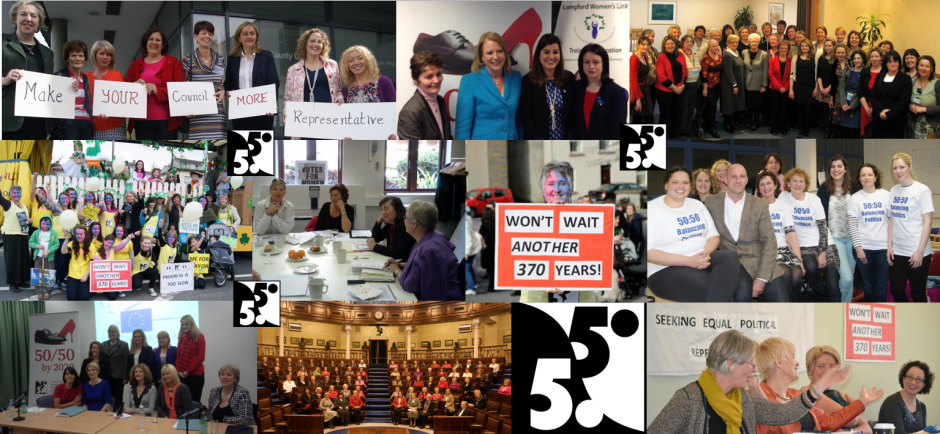Will the local elections in May result in more women sitting in our councils around the North West? So far:
- In Sligo of the 31 candidates 24 are men and 7 are women.
- In Leitrim of the 24 candidates 19 are men and 5 are women.
- In Donegal of the 43 candidates there are 37 men and 6 women
The 5050 Group is campaigning to encourage and support more women in politics and public life. The new gender quota legislation, which will ensure more women candidates, does not take effect until the next general election. However the impact of the legislation is beginning to be felt – in some areas. Across the country so far, 23% of all local election candidates are women; this compares with 17% five years ago in 2009.
We have become used to the majority of our public representatives being men. Currently, men account for 84% of all our elected representatives! One imagines there would be outrage if men were as poorly represented in our council chambers.
The 5050 Group plans to observe the progress of the local elections as political parties and independents gear up for the campaign trail and the elections in May and to encourage and support the election of women.
“One certain way to improve the number of women in our council chambers is for every voter to consider all the candidates carefully and to think about the lack of equality in our political process. Just over 50% of the population are women; that figure should be echoed in our political system, said Nóirín Clancy of 5050 North West.
In Sligo it is very disappointing how few women the main parties have selected. With two Fine Gael women Councillors resigning one would have expected the party would at least try to maintain their female numbers; however, Sinead Maguire is their only woman candidate. Likewise, Fianna Fail and Labour have their two incumbents, Rosaleen O’Grady and Marcella McGarry running again. It is interesting to note of the six independents, four are woman and it is positive to see two newcomers with Marie Casserley and Mary Tuffy.
The picture in Leitrim and Donegal is no different. In the Donegal electoral area, out of six candidates, just one female candidate, Niamh Kennedy, is running as an Independent, Fianna Fail and Labour have still to make their selections in this area. Hopefully, Fianna Fail will replicate the gender balance achieved in the Inishowen electoral area where they’ve selected two women (incumbent Rena Donaghey and newcomer, Mary McCauley) and two men. In the remaining four electoral areas where they’ve yet to hold conventions it will be interesting to see if we see such ideal outcomes.
In Leitrim, no big changes with a predominantly male line up. In North Leitrim, Mary Bohan and Siobhan McGloin are running to hold on to their seats and just two new women – Fine Gael’s, Siobhan Finnegan McElgunn and Sinn Fein’s Maureen Martin will run in the south of the county.
While nationally there is an increase in the number of female candidates in this year’s local elections, an interesting geographical dimension is emerging. Adrian Kavanagh, NUI Maynooth who maintains a blog listing all candidates, highlights that in the more urban constituencies female candidates account for 29% but only 18.2% in the more rural constituencies. Quotas are part of the solution but it is evident that much more is required to transform the male dominated political system. More women need to make the leap from the community to the political arena. Political parties need to examine more closely what is stopping women coming forward and getting selected and use their power to start making politics more women and family friendly.
